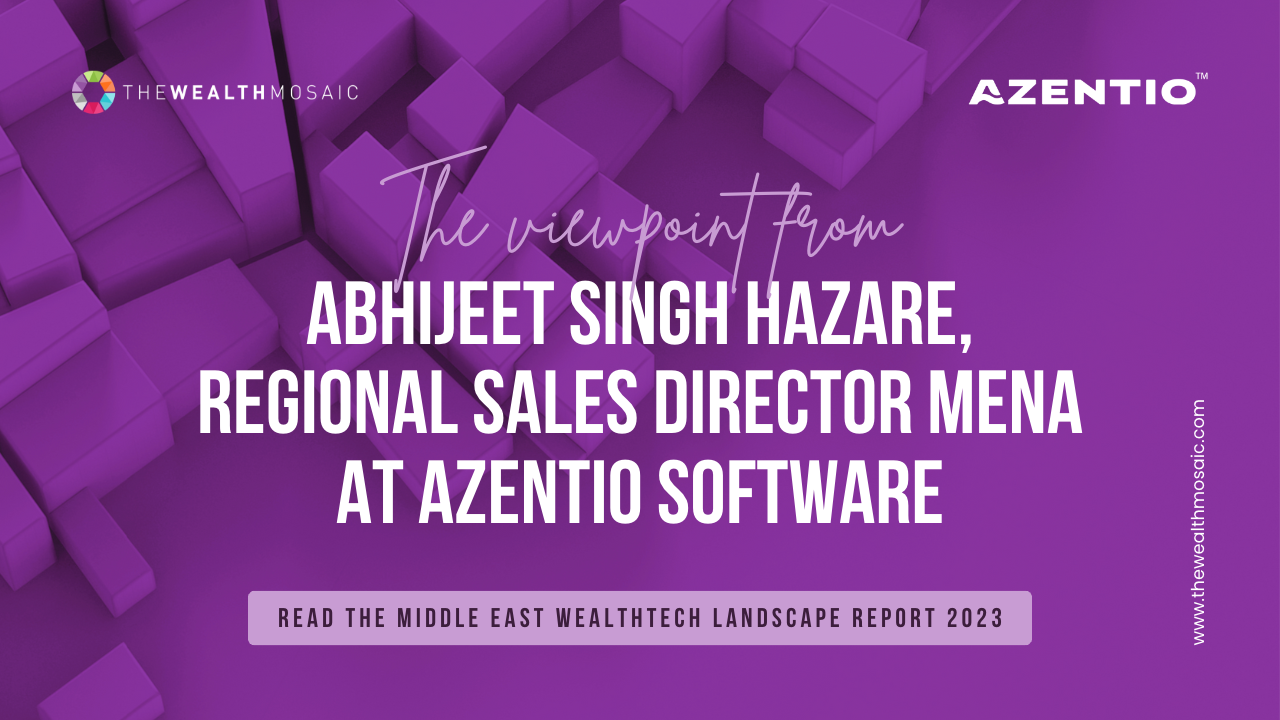
Ecosystem integration is all about taking an “outside-in” approach to orchestrate end-to-end integrations with a dynamic network of trading partners, applications, suppliers, customers, and marketplaces.
Being able to put together an architecture that can flex and integrate with other components to serve the bespoke needs of each private bank or wealth manager is the need of the hour. Without such an ecosystem, data and processes cannot flow and the system ends up hobbled by manual processes, systems that cannot talk to each other, time delays and inaccuracies.
Getting this right is very much the focus for most wealth managers. In order to service and engage their clients they need a proposition that is sleek and easy-to-use at the front-end, supported by a robust and accurate architecture beneath. A core wealth platform with components that can be selected according to the wealth manager’s needs, we believe, is the way forward.
Componentisation
Hence a componentised or decentralised approach is required which allows the wealth manager to choose between a full-stack solution or any of the elements of the full-stack. The key to a componentised approach is being able to identify what is lacking or sub-optimal within the existing infrastructure and being able to work towards remedying that. This process needs to include elements that do not need any attention or that are best left alone. The approach also needs to consider existing third-party elements and how they work within the broader ecosystem.
As an example, the wealth manager might just need a portal to bolt onto other elements of an existing architecture. The portal would provide an upgrade so that the wealth manager’s own clients could choose from various methods of communication, access their accounts and holdings easily, undertake some transactions and so forth. In this instance, the underlying system that the wealth manager already has in place would be able to provide the data and other information, but the portal would provide the digitised communication channels as well as the dashboard and the presentation at the front end.
This is a commonplace example of take up that we are seeing. What we are hoping to add as a solution provider is the means to easily integrate functional modules and offer a solution to specific pain points such as those in CRM, on-boarding, compliance, valuations, financial planning, investment, advisory processes, rebalancing or risk assessment, amongst others.
Obviously, an end-to-end solution is also on offer and indeed sometimes in demand, but today’s approach is largely componentised. This allows for technology to pick off specific pain points and integrate the appropriate solution into an existing ecosystem. This meets the needs of wealth managers today as well as enables systems to evolve and change in the future. In fact, an agile approach that is instantaneous and at the point of need helps meet the demands of today and tomorrow and is a real value add.
Integration
Being able to do all this successfully relies heavily on being able to integrate with other systems and processes and have a culture of collaboration. After all, adding on components is only viable if it is easy to do and will not create any downstream issues. Solutions also need to have an intuitive user interface that can be used alone or as a part of another dashboard. A good example of this is that many of our customers use Salesforce and so our components need to be able to feed into their front end.
The integration needs to be seamless, and the end-user should not even be able to notice it.Wealth managers should focus on creating a leaner, more agile and productive operating ecosystem, both within and in collaboration with external partners like brokers, custodians and product providers or distributors. Configurability also has a large part to play. Although banks and wealth managers generally want the same in terms of actual function, the way it is configured and presented to them needs to have some flexibility and each has their own rules-based processes and so on. It allows the customer to be flexible and have the tools to really power forward their business in the way that they have decided is best for them.
Data analytics
Finally, any wealth technology offering today also needs to have robust data analytics capability to help wealth managers make sense of large volumes of data. A 360-degree client view and a next-best-actions capability enhances the ability to have a deep relationship with clients and adds value to a business model by enabling customer retention and increasing their share of wallet.
This is all about using structured and unstructured data to help create events and reminders automatically, monitor sentiments and flag any distress, identify cross-selling opportunities, recommend the next best action, and generate investment advice on-the-fly. Data analytics is growing in importance as the volume of data, both unstructured and structured, comes into play and the value adds that can be gleaned from the data has increased. This has only increased with digitalisation and we now have transcripts, messaging as well as e-mails, phone calls and other more formal methods of recording notes of meetings. There is also social media data and other data that is in the public domain. Combining all the data gives valuable insights to the wealth manager and allows for an enhanced understanding of the client’s needs.
The use of Artificial Intelligence to process market data can drastically cut down the time taken to analyse it and, when combined with an investor’s preferences and investment pattern, it can estimate the potential impact on the fund flows, identify new investment opportunities or identify a risk well in advance.
This is useful both for the customer and the wealth manager. But thus far, uptake is limited. Ultimately this is still quite a new technology and so naturally it will take time for things to evolve and for people to get used to the concept, accept its value, and check how it fits into existing processes for suitability, rebalancing etc.
However, there is a lot of excitement around it. After some first-mover action by bigger banks, others will follow. In the end not taking up new technologies means standing still and stagnating and wealth managers need to avoid this. For that reason, we see the future of technological innovation within the segment as positive and a space to watch out for.

In this article published in The Wealth Mosaic, L Guru Raghavendran, Senior Vice President, Banking and Capital Markets at Azentio Software, looks at the best ways to mitigate risk from transaction laundering.
The Wealth Mosaic

Regional Sales Director at Azentio, Abhijeet Singh Hazare, reveals how advisers can yield maximum results by unlocking the power of AI and alternate data.
The Wealth Mosaic

Regional Sales Director at Azentio, Abhijeet Singh Hazare, reveals how advisers can yield maximum results by unlocking the power of AI and alternate data.
We are happy to hear from you and answer your questions. Let's begin our journey together.